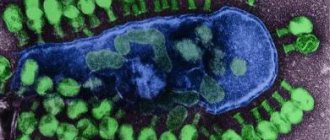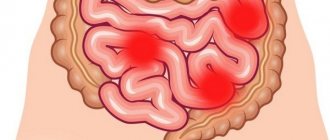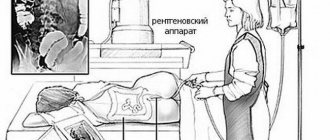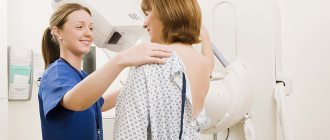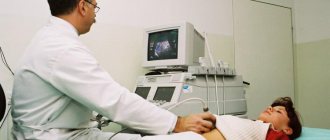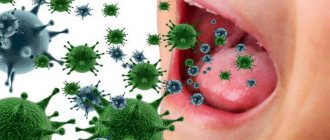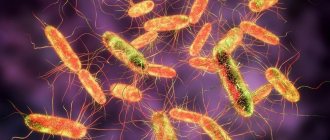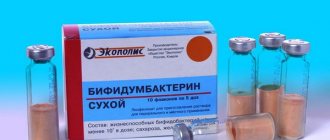Bacteriological stool culture (tank culture) is a biological study of feces that determines the composition and approximate number of microorganisms living in the human intestines. This is done by introducing feces particles into different nutrient media on which 3 groups of microorganisms grow: normal (necessary for digesting food), opportunistic (change their normal properties) and pathogenic (disease-causing). At the same time, it is possible to establish the sensitivity of pathogenic bacteria to antibiotics and bacteriophages.
Groups of intestinal microorganisms:
- Normal bacteria are bifidobacteria, lactic acid bacteria (lactobacillus) and Escherichia coli, which has typical properties, bacteroides;
- Conditionally pathogenic bacteria – enterobacteria, clostridia, anaerobic and non-fermenting bacteria;
- Pathogenic bacteria - atypical Escherichia coli, which has hemolytic or enzymatic properties, staphylococci, fungi of the genus Candida (yeast), Shigella, pathogenic Salmonella, Proteus, Pseudomonas aeruginosa.
What does the analysis show?
Stool culture establishes the composition and quantity of intestinal microflora. Another name for the study is feces for dysbiosis or feces for intestinal group.
The analysis consists of two stages. At the first stage, a specially prepared smear is examined under a microscope, and bacteria are detected. They are placed in nutrient media that are standardized (in other words, it has long been known which microorganisms develop best in which media).
Laboratory glassware with media and cultures are placed in a thermostat that simulates the temperature and humidity of the human body. The environment is kept in the thermostat for up to 7 days. Time is necessary for all the introduced bacteria to multiply and form colonies (a colony is the descendants of one bacterium). After this period, the number of grown bacteria and colonies is counted.
Some media initially contain antibiotics or bacteriophages. By comparing the number of colonies grown on a regular nutrient medium and containing antibiotics, you can find out which drugs can significantly reduce the growth of bacteria. This is how sensitivity to antibiotics is determined.
Based on the result, one can judge which group of bacteria predominates in the intestines of a particular person and how much the normal microflora is changed.
How long does the analysis take?
In most cases, the answers to the question of how long it takes to seed a tank will be as follows:
- 5-7 days when examining mucus from the nasopharynx;
- 4-7 days when examining urine and feces (in this case, the timing of bacterial culture is specified by a laboratory assistant) ( Main article: “Bacterial culture of urine“
); - 7 days when examining scrapings of the urogenital tract;
- 4-7 days when examining general flora;
- 10 days when testing blood for sterility.
One way or another, you need to find out how many days it takes to prepare a culture tank from a particular organ in the laboratory where you submit it.
How to take the test correctly?
The reliability of the analysis depends on the quality of material collection, so all points must be carefully followed. The meaning of all actions is sterility, so that bacteria, which are always in the external environment and have nothing to do with humans, do not get into the material.
Preparing for the examination
During preparation, the following conditions must be observed:
- For 2 days, stop taking medications containing bismuth (De-nol, Vikair, Vikalin, Ventrisol, Bismofalk and the like) and iron (Tardiferon, Ferroplekt, Ferrum-lek);
- wait for the natural act of defecation, if necessary, postponing the date of delivery of the material;
- If you need to take any medications daily, inform your doctor and laboratory assistant.
What you should never do:
- use laxatives, their use distorts the result;
- use candles, even glycerin ones;
- give an enema, microenemas (Microlax, Norgalax), including.
Preparing containers
To collect stool, pharmacies have disposable sterile containers with a spoon. The most expensive one costs up to 10 rubles, there are also much cheaper ones. The container should not contain any liquid or preservative (just tell the pharmacist that it is for dysbiosis analysis). Good laboratories provide such containers upon request, adding the cost to the price of the analysis.
It is not advisable to use other containers - baby food jars, etc. - as even boiling does not ensure sterility. At home, it is impossible to achieve the sterility required for laboratory glassware.
Collection of material
- To collect material, use a clean, dry vessel - for bedridden persons. For walkers, place a new plastic bag in the toilet so that the bag covers the entire surface. For children - lay out a clean diaper; you cannot take it from the diaper (the diaper, and especially the diaper, absorbs liquid).
- After defecation, open the container, remove the spoon (attached to the lid), without touching anything inside the container.
- Use a spoon to collect the material from the middle without touching the edges.
- Fill the container no more than one-third full.
- Screw on the lid.
- Place a clear inscription on the container: last name and initials, year of birth, date and time of collection of the material (some laboratories require a referral number).
How long can collected material be stored?
The container with the material must be delivered to the laboratory within 3 hours . If you bring it later, the laboratory simply will not accept it, since the analysis cannot be reliable.
While traveling, it is advisable to avoid direct sunlight and overheating. It is best to place the container, wrapped in a plastic bag, in a bag or briefcase. You cannot place it on the front panel of the car, keep it near the stove or wear it under a fur coat. In winter, the temperature that is in your bag or briefcase is enough; there is no need to wrap it up.
Some laboratories allow the material to be accepted after 8 hours if it has been stored in the refrigerator. This needs to be clarified in the laboratory.
How to collect a stool sample correctly
A matchbox should not be used as a container for stool analysis. For these purposes, it is necessary to use plastic or glass containers. You can purchase a special set, which, in addition to the container, includes a convenient spatula for collecting feces.
There is no point in preparing stool in the evening if it needs to be taken for analysis in the morning. To get the most accurate and reliable results, it is better to do this in the morning. But when diagnosing certain diseases, it is allowed to deliver material to the laboratory for analysis within 12 hours from the moment of defecation.
When examining for the presence of vegetative forms (giardia, etc.), stool must be checked within 15 to 20 minutes from the moment of collection, otherwise the vegetative forms become unrecognizable.
Stool collection is carried out as follows: approximately 10 grams of feces are taken from four different places of fresh feces and placed in a clean, dry container. Before submitting for scatology, stool can be stored in the refrigerator.
Decoding indicators
The doctor gives a full assessment; the data below is indicative.
The form of each laboratory contains normal average or reference values, and the obtained indicators are compared with them.
Reference values are within:
- typical Escherichia coli - from 10 7 to 10 8;
- lactose-negative rods – less than 10 5;
- hemolytic Escherichia coli – absent;
- Proteus – less than 10 2;
- opportunistic enterobacteria – less than 10 4;
- non-fermenting bacteria – up to 10 4;
- enterococci – up to 10 8;
- hemolytic staphylococcus – absent;
- other staphylococci (saprophytic) – up to 10 4;
- bifidobacteria – up to 10 10;
- lactobacilli – up to 10 7;
- bacteroids (normal inhabitants) – up to 10 7;
- clostridia – no more than 10 5;
- yeast fungi - less than 10 3.
Gastroenterologists distinguish 3 degrees of severity of dysbiosis:
- First degree. A decrease in the number of lacto- and bifidobacteria by 1-2 orders of magnitude in combination with the appearance of E. coli of altered forms (hemolytic, lactose-negative);
- Second degree. A significant increase in the number of opportunistic bacteria (up to 10 5 colony-forming bacteria per gram);
- Third degree. High content of opportunistic and pathogenic bacteria.
What do the results say?
The results of the analysis are written out on a piece of paper, which was attached to the container and handed over to the doctors. The content of bacteria and other substances and organisms is measured in a special unit - CFU. CFU is a colony forming unit.
There are generally accepted standards for the content of various bacteria in 1 gram of feces:
- Bifidobacteria . The norm is 108 – 1010 CFU.
- Lactobacilli . The norm is 105 – 110 CFU.
- Escherichia . The norm is 106-108 CFU.
- Bacteroides . The norm is 107-108 CFU.
- Peptostreptococci . The norm is 105-106 CFU.
- Enterococci . The norm is 105-108 CFU.
- Saprophytic staphylococci . The norm is less than 104 CFU.
- Clostridia . The norm is less than 105 CFU.
- Candida . The norm is less than 104 CFU.
- Pathogenic enterobacteria and pathogenic staphylococci should be completely absent.
In infants and young children, the norms for bacterial content in feces differ from adult norms. The intestines of young children do not contain the same number of microorganisms as those found in the adult intestines. When switching to artificial feeding, 75% of children experience dysbiosis and intestinal disorders.
Principles of treatment of intestinal microflora disorders
The doctor prescribes specific treatment depending on the clinical picture and examination results. The general principles are:
- removal of the cause that caused dysbiosis - abolition of antibiotics or destruction of the infectious agent;
- fractional meals with boiled pureed food;
- exclusion of alcohol, fatty and fried foods, smoked meats and marinades;
- daily consumption of fermented milk products;
- prescribing medications to restore normal microflora: probiotics (dry or sorbed strains of bacteria), prebiotics (nutrients for normal microflora) and synbiotics (contain both components).
Stool culture quickly gives an answer to the question of why digestion is impaired and how to fix it.
It's no secret that our intestines are home to a large number of different microorganisms. All of them, according to their properties, are divided into 3 groups:
- “useful” (bifidobacteria, lactobacilli);
- opportunistic (fungi, clostridia, enterobacteria);
- pathogenic (“harmful” - salmonella, shigella).
The “useful” inhabitants of the intestines take an active part in the process of digesting food, helping to saturate the body with useful microelements and vitamins. Opportunistic pathogens occupy a neutral position, being neither completely “beneficial” nor “harmful”. However, if the natural bacterial balance of the body is disturbed (dysbacteriosis), they can easily “go over to the side of evil” and become pathogenic.
Initially, there should be no pathogenic microorganisms (Salmonella, Shigella) in the intestines of a healthy person. Their appearance immediately causes acute intestinal infections, which a stool examination will help identify and treat.
Bacteriological analysis of feces is a laboratory study of human feces, which is carried out by placing biomaterial in a nutrient medium in order to determine the content in the intestine of a set of “harmful”, opportunistic microorganisms, and standard “useful” microflora. The patient is referred for a stool test if he exhibits symptoms of dysbiosis and intestinal infections.
When should you donate stool to a culture tank?
A stool test is prescribed to patients who exhibit symptoms characteristic of intestinal pathologies:
- the temperature has risen;
- vomiting occurs;
- nausea appears;
- painful sensations occur in the peritoneal area;
- diarrhea began, etc.
Based on one clinical picture, specialists will not be able to make an accurate diagnosis; they can only assume the development of a particular disease. To confirm their assumptions, they must conduct a comprehensive examination of patients, based on the results of which they will be able to diagnose the disease and identify its causative agent.
It is worth noting that sanitary and epidemiological standards approved at the legislative level oblige people with certain professions to regularly submit feces for bacterial culture.
This list includes professions related to:
- with transportation, packaging, sale, production of food products;
- with cleaning of premises located in public catering establishments;
- with cutting meat, poultry, fish, etc.
Also, people working in kindergartens, schools, medical institutions and other places where they constantly have to come into contact with food should undergo regular examination. All laboratory test results for workers are recorded in health records.
Routes of transmission
There can be many reasons for the development of “harmful” microorganisms in the human body. One of the most basic is failure to comply with basic rules of personal and food hygiene , namely:
- eating unwashed vegetables and fruits;
- neglecting to wash hands before eating;
- eating food from dirty dishes;
- using raw water (milk) for drinking;
- insufficient heat treatment of meat products;
- neglect of cleaning the house.
However, you don’t have to be an outright slob to disrupt the body’s natural bacterial balance. As mentioned earlier, for opportunistic microorganisms inhabiting our intestines to become pathogenic, it is enough:
- constantly experience stress;
- overload yourself physically;
- move to a climate zone that is unsuitable for you.
You can also unwittingly become a carrier of dangerous intestinal infections without suspecting anything. It happens that pathogenic microorganisms inhabit the human intestines, but the person does not observe any specific symptoms of intestinal infections, for example, the following:
- elevated temperature;
- body aches;
- vomit;
- stomach ache;
- diarrhea;
- flatulence;
- lack of appetite;
- bad breath.
When a patient comes to a therapist with a complaint about the symptoms described above, he will refer him for a bacteriological examination of stool. Further treatment is determined by a more specialized specialist - a gastroenterologist or an infectious disease specialist .
What is the essence of the analysis?
The surface of the mucous membrane and the lumen of the human intestine are populated by various microorganisms, which include bacteria and fungi. Some species are necessary for the normal course of digestion processes; some microorganisms should not normally be present or their minimum amount is allowed.
Based on these criteria, there are 3 main groups of microorganisms that populate the intestines:
- Opportunistic microorganisms. Represented by a small number of microorganisms. Normally, their development is suppressed by normal microflora, as well as local immunity factors. Under certain conditions leading to a decrease in the protective properties of the mucous membrane, the number of cells of representatives of opportunistic (opportunistic) microorganisms increases, which leads to the development of an inflammatory reaction and pathological process.
- Pathogenic microorganisms. Normally, they should not be in the intestines. Their appearance and subsequent vital activity lead to the development of the disease. Sometimes, when the properties of microorganisms are weakened, as well as certain individual characteristics of the immune system, bacterial carriage is possible. This is a condition when pathogenic microorganisms are present in the intestines and are released into the external environment, but there are no signs of a pathological process (disease).
- Normal microorganisms are necessary for the normal functional state of the intestine. They perform a number of important functions, which include protecting the mucous membrane, improving the digestion process and digestion of cellulose through the production of certain enzymes, the synthesis of B vitamins in the large intestine, and the formation of feces.
Table 1. Representatives of the intestinal microflora: normal, opportunistic and pathogenic bacteria.
Most bacteria, representatives of normal and opportunistic microflora, are determined during the study of stool analysis for UPF.
The principle of the laboratory research method is to inoculate biological material (stool) on special nutrient media. Colonies of microorganisms grow on them and are identified.
Colony counts (CFUs, or colony-forming units) are then performed, followed by determination of the number and ratio of different types of bacteria.
Rules for taking the analysis
To obtain a reliable result of a bacterial analysis of stool, it is necessary to strictly adhere to the rules for collecting biomaterial. So, in order to properly pass the tank analysis, it is necessary 2-3 days before submitting the material to the laboratory to stop using rectal suppositories, Vaseline, castor oil, laxatives, medications containing iron, bismuth.
The containers for submitting feces for culture must be sterile. A special container with a lid and a stick for collecting stool, which can be purchased at a pharmacy, is best suited. Since in order to obtain reliable results of bacteriological examination of stool for intestinal infections, the container must be sterile, it is better not to open the jar for collecting biomaterial again and not to touch its inner surface with your hands.
The act of defecation must occur naturally (the use of laxatives, rectal suppositories, and enemas is strictly prohibited). Before collecting material for analysis, you must urinate in the toilet, since the result will not be reliable if urine gets into the feces container. Defecation is performed in a clean vessel (not in the toilet). Then, using a special stick that comes with the container, the feces are collected and placed in a container for collecting feces for bacterial analysis. The volume of material should not exceed a third of the container (2 teaspoons).
The container with the biomaterial must be delivered to the laboratory as soon as possible. If it is not possible to deliver immediately, then the collected material can be refrigerated for up to 8 hours .
Biomaterial for bacterial culture of a baby's stool can be collected from a clean diaper or underwear of the child. It is better not to take feces from a diaper, as the analysis may give an incorrect result.
Sometimes a rectal smear is taken for disgroup. In this case, all manipulations to collect material for analysis are performed by a nurse. The patient lies on his side and spreads his buttocks, and the nurse, using a special rectal swab, collects material for bacteriological examination of stool for dysbacteriosis.
You have to wait on average 1 week for results. The shelf life of the disgroup analysis is counted from the day the research results are received and is 10 days.
Description of the analysis
The group of intestinal infections is one of the most common among all gastrointestinal diseases. The most dangerous thing about them is increasing intoxication, leading to serious consequences, including death. Establishing the exact cause of the disease allows us to organize the correct management and treatment of a patient with digestive disorders.
Considering that the signs of gastrointestinal tract damage are in many cases similar and clinically difficult to distinguish, stool analysis for the intestinal group of infections makes it possible to differentiate infectious diseases from other pathologies. The study will help identify not only dysentery, but also trichomoniasis, salmonellosis, cholera, and worms. An analysis for the disgroup is performed in bacteriological laboratories using special nutrient media for inoculating biomaterial.
It is recommended to donate stool for disgroup if there are signs of intestinal damage. These include:
- symptoms of intoxication: nausea, vomiting;
- dyspeptic disorders;
- pain syndrome;
- lack of appetite, fever;
- prodromal phenomena, weakness.
Clinically distinguishing rotavirus and other enteroviral infections from dysentery can be difficult. The issue of the pathogen is resolved only after laboratory diagnosis. Additionally, a stool test is prescribed for UPF (opportunistic pathogenic flora), it helps to identify dysbacteriosis.
Doctors also evaluate clinical symptoms: flatulence, alternating diarrhea and constipation, bad breath, sudden intolerance to previously favorite foods. Most often, this picture is observed in children. If it is not possible to associate it with a change in diet, the activation of pathogenic microorganisms for one reason or another is suspected.
Analysis for UPF allows us to identify changes in microflora. Detection of pathogenic microbes requires treatment, which is carried out inpatiently. Hospitalization involves the administration of parenteral drugs, professional rehydration and control laboratory tests.
If a bacterial infection is suspected, a certain algorithm of diagnostic measures is used: examination of the patient, history taking, microscopy of biological material, bacterial culture, PCR method in difficult cases
It is especially important to follow this sequence of actions when examining pregnant women. This helps to find out not just the etiology of acute intestinal infections or chronic dyspepsia, but also to show the degree of functional safety of the digestive system of the mother and the unborn baby
Examination of feces for the intestinal group in newborns helps to detect enzymes in feces, which indicates dysfunction of the gastrointestinal glands and is the cause of insufficient weight gain in the infant. An extended coprogram helps to establish an accurate diagnosis. The identified deficiency of beneficial lactobacilli is corrected, vitamin and mineral therapy is carried out, normal intestinal microflora is restored and the functioning of the digestive system is normalized.
Another indication for analyzing feces for a disgroup is the preparation of medical cards for designated groups of the population (food workers, catering workers, kindergartens, salespeople, water utility workers, etc.). In addition, all patients whose cause of digestive disorders is unclear are subject to screening for intestinal infections.
Laboratory diagnostics gives an idea of the ratio of pathogenic and healthy microflora in the intestines in all age categories. On this basis, a differential diagnosis can be made between clinically similar diseases. This is how typhoparatyphoid and other rare pathogenic bacteria and latent carriage (giardia, helminths, shigella) are detected.
How the research works
Tank tests are comprehensive studies of the patient’s stool to identify pathogenic organisms in the intestines and diagnose dysbacteriosis. It is carried out using the following research methods:
- microbiological;
- biological;
- serological.
The microbiological method will allow you to see the causative agents of the disease - pathogenic bacteria - using a microscope. However, this method will only be feasible on the 7th day after infection.
Sowing on the intestinal group is carried out in this way: feces are placed in an environment that is most suitable for the growth and development of harmful microorganisms. After some time ( 5-7 days ), the type of microorganisms can be determined by the colonies that have grown during this period.
A disgroup test shows whether pathogenic microorganisms such as salmonella or shigella are present in the patient's stool. If any are present, then another study is carried out to determine the sensitivity of these pathogens to certain antibiotics.
If the pathogens die, the patient is prescribed the appropriate drug. Sowing for a disgroup is what will allow you to identify dangerous diseases in time and begin appropriate treatment.
Features of the event
To identify the general clinical picture and pathology encountered by the patient, the laboratory technician places feces in a special nutrient medium. After 5 days, colonies of microorganisms should grow in them, from which specialists can prepare a smear for the intestinal group.
Even if the number of bacteria is insignificant, laboratory technicians will still be able to perform an analysis. The biological material is placed under a microscope, where a laboratory technician can determine the type of microorganisms living in the feces based on their external type and mobility. After this, a study of the causative agent of E. coli is carried out.
The undoubted advantage of such a study is that it will not only reveal what type of microorganisms are present in the human body, but also determine its susceptibility to antibacterial drugs. How much decoding of the analysis is done depends on the type of institution.
Decoding the results
Table of normal indicators for tank analysis
| Typical E. coli | 10 7 — 10 8 |
| E. coli lactose negative | 5 |
| E. coli hemolytic | No |
| Microbes of the genus Protea | 2 |
| Other opportunistic enterobacteriaceae | 4 |
| Non-fermenting bacteria | 10 4 |
| Enterococcus | 10 5-8 |
| Staphylococcus hemolytic | No |
| Staphylococci (saprophytic, epidermal) | 10 4 |
| Bifidobacteria | 10 9-10 |
| Lactobacilli | 10 7-8 |
| Bacteroides | 7 |
| Clostridia | No more than 10 5 |
| Yeast mushrooms | 3 |
Bacteroides are gram-negative bacteria that inhabit the human intestine. The composition of bacteroids in the feces of a healthy person usually does not exceed Classification
Tank tests can help a doctor diagnose not only gastrointestinal infections, but also other diseases. For example, tank tests for gyno (vaginitis) can diagnose bacterial vaginosis in women. As mentioned earlier, lactobacilli live not only in the intestines, but also in the vagina of women in a certain amount. A violation of the ratio of opportunistic, pathogenic and “beneficial” bacteria can provoke a disease such as bacterial vaginosis.
A doctor may order a blood test for dysgroup if the patient's symptoms indicate blood poisoning. Indications for tank blood test:
- elevated temperature (for a long time);
- suspected infectious diseases.
Usually, a blood culture test is taken before starting a course of antibiotic therapy, since after using antibiotics one cannot hope for a reliable test result.
Give the children a sowing tank
necessary to identify pathogens and evaluate the effectiveness of treatment. Various biological materials are used for research: blood, urine, feces, nasopharyngeal discharge and others. The materials taken in a certain way are placed on a nutrient medium. This leads to the multiplication of the pathogen and makes it possible to determine its type and type. In addition, such an analysis makes it possible to assess the sensitivity of microbes to antibiotics and prescribe the necessary treatment. To get the most reliable results, a culture test must be taken before starting antibiotic therapy.
A bacterial culture may be prescribed by a gastroenterologist or other specialist. Most often, blood, urine, feces, and swabs from the nose and throat are subjected to bacteriological examination.
Indications for diagnosis in children are:
It is recommended to donate blood at maximum body temperature. In this case, the number of microbes is especially high and the result will be reliable. The sampling is carried out before the start of treatment or 10-14 after its completion to establish the effectiveness of therapy.
A bacteriological analysis of urine for sterility is prescribed for suspected diseases of the kidneys, urethra, bladder, as well as to identify certain infections. It is advisable to provide a morning urine sample for the study. For infants - any that you can collect.
A stool culture tank must be submitted if intestinal infections are suspected (salmonellosis, dysentery, etc.). The analysis reveals acute, chronic forms of pathology and stages of carriage. Based on this, a therapy program is drawn up and its results are monitored.
For infectious diseases of the upper respiratory tract (for example, sore throat, whooping cough, scarlet fever), a culture from the nose or throat is indicated. This examination is also carried out before the child enters kindergarten or school. It is better to carry out the procedure in the morning, before brushing your teeth, on an empty stomach.
“Healthy Generation” offers to donate seed tanks to children. We carry out all types of analyzes in a short time. Based on reliable diagnostic data, the attending physician will be able to prescribe appropriate therapy.
Intestinal dysbiosis is one of the most common diagnoses made when there is a change in stool in infants. Some experts believe that this is the root of all digestive disorders. Dysbacteriosis is a change in the composition of the natural intestinal microflora, a condition in which the digestion process in the intestine is disrupted. In the article we will tell you when and how to get tested for dysbiosis in an infant, what collection rules exist, and what the analysis shows.
Who lives in the intestines?
The gastrointestinal tract is practically inactive while the fetus lives in the womb. All necessary substances are supplied through the umbilical cord. A newborn's intestines are still sterile. With the first sip of mother's milk, the intestines cease to be uninhabited, and the introduction of complementary foods and formulas, month after month, adds new species to the diversity of bacteria. A child puts almost everything he sees into his mouth - this is how he learns about this world. At one year of age, the intestinal microflora has almost the same composition as the microflora in an adult. But the process of adaptation of the digestive system in a child under one year old can take place differently.
Normally, more than 500 types of microbes live in the neighborhood of the intestines, which for convenience are divided into 3 groups:
- Obligate or obligatory flora (90%), which includes the main beneficial microbes (bifidobacteria, lactobacilli and bacteroides).
- Opportunistic bacteria, which make up about 10% of the microflora and, remaining in such quantities, do not harm the body.
- Intermediate group so-called “random” bacteria (clostridia, yeast, staphylococci, etc.), the presence of which in feces is normal, but their number should always be low.
The total weight of all microorganisms living in the gastrointestinal tract is about 2 kilograms. We can say that microflora is a separate organ of the human body that promotes the digestion process, helps the body absorb nutrients, protects it from infection, produces vitamins and enzymes, and participates in metabolism.
What is tank analysis and why is it needed?
Tank analysis (bacteriological culture) is an analysis that identifies pathogenic bacteria that depress the health of the gastrointestinal tract and cause various intestinal diseases - the causative agents of salmonellosis, dysentery, typhoid fever and other dangerous parasites.
The essence of this diagnostic method is that stool samples are placed in a special environment favorable for the development and reproduction of bacteria and other microorganisms. During the study, the exact time, temperature, and lighting level necessary for the development of microbes are established. Different types of bacteria have their own environment. The study is carried out in a special Petri dish.
If the material under study contains pathogenic microorganisms, then in a favorable environment they will begin to multiply at an active pace, and then the picture of the disease will become clearer.
Dysbacteriosis – cause or effect?
It is believed that dysbiosis is always a secondary condition, i.e. it cannot arise on its own. On the other hand, this condition can cause the development, for example, of intestinal infections and hypovitaminosis (vitamin absorption occurs mainly in the intestines).
Here are some factors that can cause an imbalance in the intestinal microflora:
- artificial feeding (early and/or too rapid introduction of complementary foods);
- diseases with a long course, causing a decrease in local and general immunity;
- deficiency of enzymes necessary for digestion;
- violation of intestinal motor function (with constipation or incomplete bowel emptying, rotting processes begin);
- taking certain medications (antibiotics, aspirin and other anti-inflammatory drugs, laxatives).
It is difficult for a child's body to tolerate any stress, such as climate change, physical or emotional overload. And this is also a possible cause of dysbiosis, especially in an infant.
Getting ready for research correctly
Three days before taking the test for dysbacteriosis, you need to start following the following recommendations:
- Stop taking medications to eliminate their effect on microflora. Activated carbon, Smecta, Simethicone, vitamins, probiotics, laxatives - we cancel all this.
- Do not put rectal suppositories, do not use enemas - we wait for natural bowel movements.
- Do not introduce complementary foods to infants, and children on a mixed diet should not be given food that is “unfamiliar” to the body.
Taking stool
Now we will tell you in detail about how to collect feces for dysbiosis in an infant. To obtain a reliable analysis, the material sampling technique is followed.
Previously, any clean container was used as a container for collecting feces and storing it. Today, pharmacies sell special sterile test jars with a spoon so that foreign microbes do not get into the stool. The jar needs to be filled almost halfway. It is advisable to collect stool for bacteriological examination from three different places, especially those in which mucus, pus and other strange impurities are present. Make sure that urine does not get into the container. Feces should be collected in the morning - it should be fresh. Do not store the jar in the refrigerator or leave it overnight. It is necessary to submit stool to the laboratory for dysbacteriosis within an hour.
How to properly collect if the stool is completely liquid and quickly absorbed into the diaper? A urine collector will help to collect feces from a baby with watery stools. This is a special plastic bag for capturing liquid feces.
How and how long is a stool test for dysbacteriosis done? The study is carried out as follows: the laboratory doctor inoculates the stool on several nutrient media. After some time, the growth of microorganisms is determined on the media. Based on how quickly they grow and how many of them have grown, conclusions are drawn about their number. For this, a special calculation algorithm is used. Bacterial culture also makes it possible to find out the ratio of different bacteria.
Preparation for analysis, laboratory research
In order for the result of a laboratory examination of stool to be as accurate and informative as possible, patients must properly prepare for it:
- Five days before collecting biological material, a person must exclude meat and fish dishes from his menu. The diet should include white varieties of baked goods, potato dishes, cereals and dairy products. It is strictly forbidden to drink alcohol-containing drinks during these days.
- Three days before the collection of biological material, the patient must stop taking medications. You should also avoid using rectal suppositories.
The collection of biological material can be carried out personally by the patient at home. To do this, he needs to purchase a sterile container with a hermetically sealed lid from the pharmacy chain. If it is not possible to buy a disposable container, the patient can use a glass jar, which has been thoroughly washed and sterilized, as a container. If the baby needs to be tested, then the mother can take the required amount of feces directly from his diaper.
Stool collection can be done in a hospital setting. To do this, the patient will be asked to lie down on the couch and turn on his side. At this time, the laboratory assistant makes a smear, for which he uses a sterile swab, which is inserted to a shallow depth into the rectum, and then scrolled. The removed swab with biological material is placed in a test tube, which already contains a special medium.
Rules for collecting feces
If a person plans to independently collect feces and transfer them to a laboratory for research, he must adhere to the following rules:
- Foreign matter, such as blood, urine, mucus, should not enter the feces.
- If the patient uses a glass jar as a container, then no disinfectants should be used during its sterilization. You can destroy all bacteria in the following way: wash the jar thoroughly and then douse it with boiling water several times.
- If you plan to collect feces from your baby, then before putting him on the potty, the mother should carry out the same manipulations as with a glass jar.
- The collected biological material must be immediately delivered to the laboratory; the patient is allocated no more than two hours for this. If the analysis is temporarily placed in the refrigerator, the delivery time increases to four hours. Patients should understand that the later they deliver feces to a hospital facility, the less accurate and informative the bacterial culture result will be.
Features of laboratory research
Laboratory assistants place the collected feces in a small amount on a nutrient medium. Within 4-5 days, colonies of microorganisms should grow in them, from which specialists will be able to prepare a smear for the intestinal group. Even if a small amount of bacteria grows during this time, laboratory technicians will still be able to do the analysis.
Further work with biological material is carried out under a microscope. Thanks to the equipment’s ability to magnify even microscopic elements, specialists will be able to determine the type of microorganisms present in feces by appearance and mobility. Experienced laboratory technicians will be able to give preliminary results of bacterial culture on the first day.
But, for greater confidence, they should carefully examine the causative agent of an intestinal infection, which actively grows in a nutrient medium within five days, for example:
- Salmonella - bile broth.
- Shigella - all environments.
Culture of stool allows one to identify not only the pathogen present in the human intestine, but also to determine the level of its sensitivity to a particular antibiotic. When working with biological material from a patient, laboratory assistants conduct biochemical testing. The results obtained allow us to draw conclusions on the qualitative and quantitative composition of its intestinal group.
It will take laboratory technicians approximately a week to conduct a complete examination of a patient's feces. To speed up this process, some hospitals use express methods. But the results of such studies will not be as reliable as possible.
The result of bacterial culture for the intestinal group will take into account the presence of the entire spectrum of microorganisms in the feces. Their number per gram of feces is counted in CFU. If the patient underwent an extensive analysis, then its result may indicate the presence of dysbacteriosis. The patient must pass the result obtained to the attending physician, who will decipher it and, if a pathogenic microflora is identified, prescribe an effective course of drug therapy.
https://youtu.be/LsDubmI6600
